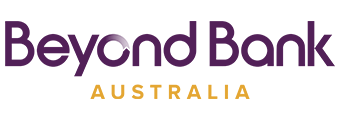Fact Checked
| Lender | Car Loan | Interest Rate | Comparison Rate* | Monthly Repayment | Interest Type | Secured Type | Early Exit Fee | Ongoing Fee | Upfront Fee | Total Repayment | Early Repayment | Instant Approval | Online Application | Tags | Row Tags | Features | Link | Compare | Promoted Product | Disclosure |
|---|---|---|---|---|---|---|---|---|---|---|---|---|---|---|---|---|---|---|---|---|
6.57% p.a. | 7.19% p.a. | $392 | Fixed | Unsecured | $150 | $0 | $250 | $23,519 | ||||||||||||
6.45% p.a. | 6.45% p.a. | $391 | Fixed | Secured | $0 | $0 | $0 | $23,451 | ||||||||||||
6.84% p.a. | 7.19% p.a. | $395 | Fixed | Secured | $0 | $0 | $250 | $23,671 | ||||||||||||
6.89% p.a. | 7.17% p.a. | $395 | Fixed | Unsecured | – | $0 | $199 | $23,699 | ||||||||||||
6.49% p.a. | 7.69% p.a. | $391 | Fixed | Secured | $150 | $12 | $250 | $23,474 | ||||||||||||
6.56% p.a. | 6.56% p.a. | $392 | Fixed | Unsecured | – | $594 | $0 | $23,513 | ||||||||||||
6.99% p.a. | 7.69% p.a. | $396 | Fixed | Secured | – | $0 | $499 | $23,756 | ||||||||||||
7.79% p.a. | 8.51% p.a. | $404 | Fixed | Secured | $20 | $5 | $150 | $24,211 | ||||||||||||
7.99% p.a. | 8.99% p.a. | $405 | Fixed | Secured | $0 | $9 | $265 | $24,326 | ||||||||||||
8.20% p.a. | 8.27% p.a. | $407 | Fixed | Unsecured | $0 | $0 | $0 | $24,447 | ||||||||||||
8.24% p.a. | 8.90% p.a. | $408 | Fixed | Secured | – | $5 | $199 | $24,470 | ||||||||||||
6.74% p.a. | 7.57% p.a. | $394 | Fixed | Unsecured | $0 | $0 | $595 | $23,615 | ||||||||||||
5.76% p.a. | 6.55% p.a. | $384 | Fixed | Unsecured | $0 | $0 | $275 | $23,066 | ||||||||||||
7.49% p.a. | 8.53% p.a. | $401 | Fixed | Unsecured | – | $10 | $250 | $24,040 | ||||||||||||
7.75% p.a. | 9.15% p.a. | $403 | Fixed | Unsecured | $0 | $15 | $0 | $24,188 | ||||||||||||
8.69% p.a. | 9.19% p.a. | $412 | Fixed | Secured | $0 | $0 | $350 | $24,730 | ||||||||||||
8.98% p.a. | 9.34% p.a. | $415 | Fixed | Unsecured | $0 | $0 | $250 | $24,898 |
Important Information and Comparison Rate Warning
Important Information and Comparison Rate Warning























